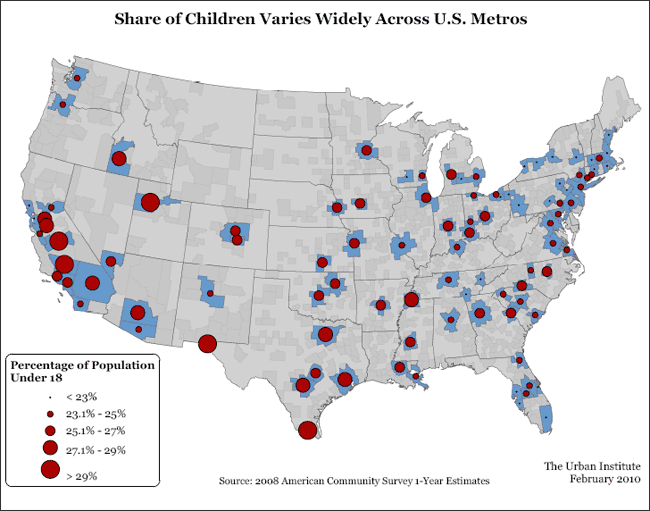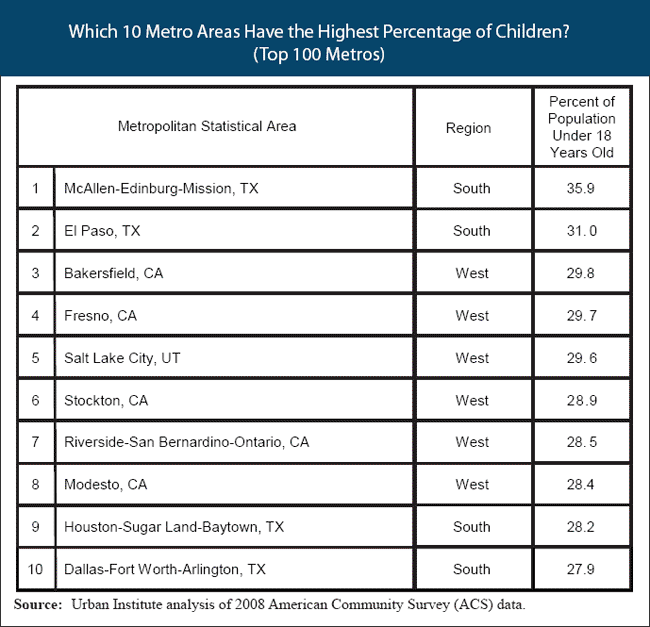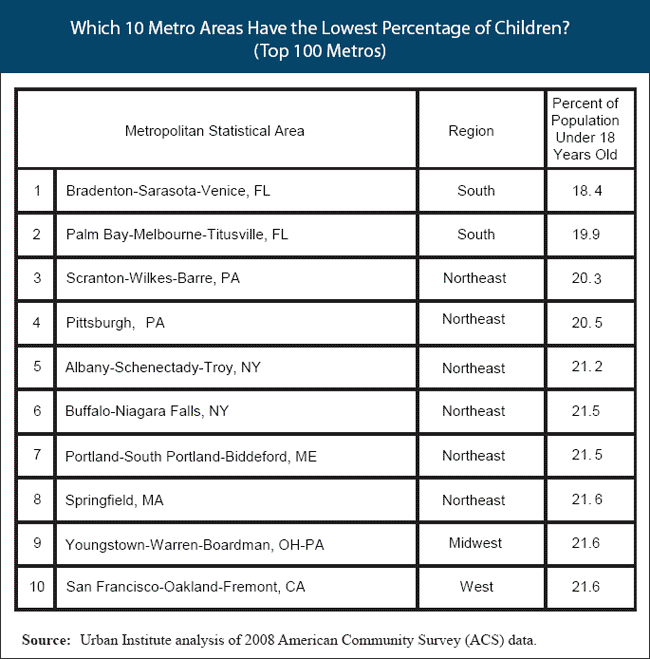
|
|
Investing in Children Mismatch Between Local Resources Today and Investment Needs for the Nation's FutureIn 2008, about one in four people living in the top 100 metropolitan areas hadn't yet reached age 18. Yet, this average hides dramatic differences. At one end of the scale, in McAllen-Edinburg-Mission, Texas, more than one in three residents are children?almost twice the share in Bradenton-Sarasota-Venice, Florida. Differences by region and state are striking. Of the 10 metro areas with the highest percentage of children, nine are in California or Texas. Not one is in the Northeast or Midwest. By contrast, six of the 10 metro areas with the smallest share of children are in the Northeast (in Pennsylvania, New York, Maine, and Massachusetts), and another two are in Florida. Why do these variations matter? After all, children who grow up in Los Angeles or McAllen may wind up working in New York or Boston or vice versa. Children are a national, not a state or metropolitan, resource. And, as the huge Baby Boom generation starts requiring support in retirement, the country needs every child to grow up healthy, well-educated, and well-prepared for work. But here's the rub: current investments in future success are disproportionately financed by the cities and states where children live now. Unlike the elderly, who get more federal support, children mostly depend on state and local revenues. Only about one-third of public spending on children is federal. State and local governments spend the rest, largely on elementary and secondary education. So voters in Texas and California school districts with overflowing classrooms are facing tax bills to pay for a national asset?a healthy and well-educated future workforce. This mismatch between localized financing and national interest is even more troubling when the child-rich metros also have to help children over extra barriers. That scenario describes the challenges faced by child-rich metros that are also home to large shares of immigrants. Of the top 10 metros with the highest percentage of kids, nine?all but Salt Lake City, Utah?are also in the top 20 metros in percentage of immigrants. Nationally, more than one in four (28 percent) children of immigrants live in "linguistically isolated" households, where no adult speaks English very well. That means that metros with lots of immigrant children may need to spend more on education to ensure that all children succeed in school. And the mismatch becomes most troubling of all when these child-rich metros face fiscal distress. Those hardest hit by recession are most likely to have a hard time funding children's education and other needed services?especially those in fiscally distressed states. Of the top ten child-rich metros, Riverside-San Bernardino-Ontario, California and Stockton, California are currently up against the double trouble of steep job losses and declining housing prices. At risk are both municipal tax bases and the ability to invest in children. Related research: Public Expenditures on Children through 2008 |
Experts Feedback
Send us your comments to help further the discussion. Share
Commentaries
|








 Olivia Golden
Olivia Golden Jennifer Ehrle Macomber
Jennifer Ehrle Macomber